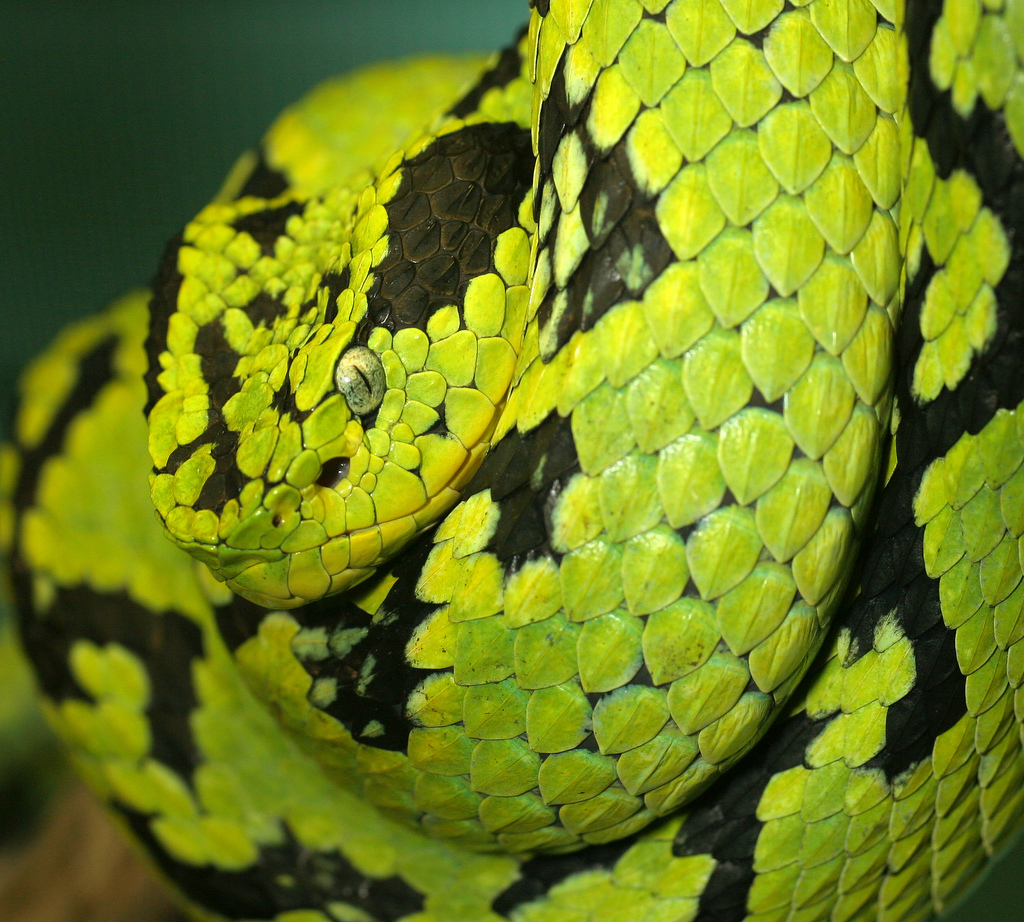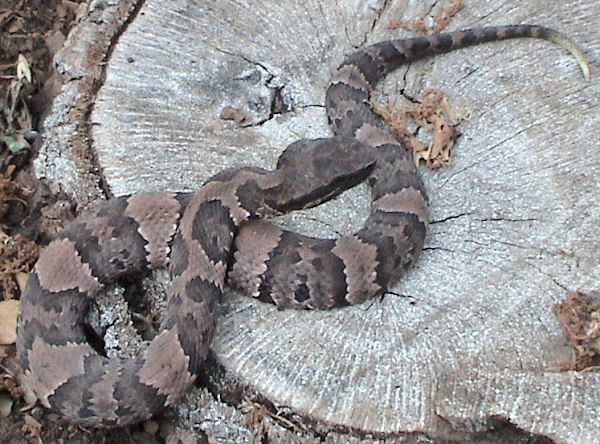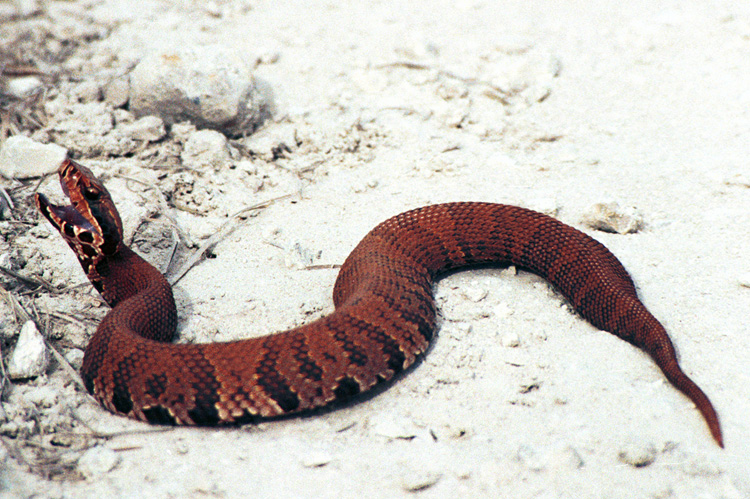|
List Of Rattlesnake Species And Subspecies
This is a list of all sure genera, species and subspecies of the subfamily Crotalinae, otherwise referred to as crotalines, pit vipers, or pitvipers, and including rattlesnakes ''Crotalus'' and ''Sistrurus''. This list follows the taxonomy as of 2007 provided by ITIS, which was based on the continuing work of Dr. Roy McDiarmid.McDiarmid RW, Campbell JA, Touré T. 1999. Snake Species of the World: A Taxonomic and Geographic Reference, vol. 1. Herpetologists' League. 511 pp. (series). (volume). with the addition of more recently described species. Species list * ''Agkistrodon'', American ground pit vipers ** ''Agkistrodon bilineatus'', Mexican ground pit viper ** ''Agkistrodon contortrix'', Copperhead *** '' Agkistrodon contortrix contortrix'', Southern copperhead *** '' Agkistrodon contortrix laticinctus'', Broad-banded copperhead *** ''Agkistrodon contortrix mokasen'', Northern copperhead *** '' Agkistrodon contortrix phaeogaster'', Osage copperhead *** ''Agkistrodon contortrix ... [...More Info...] [...Related Items...] OR: [Wikipedia] [Google] [Baidu] |
Crotalus Horridus (1)
The timber rattlesnake, canebrake rattlesnake, or banded rattlesnake (''Crotalus horridus'') Wright AH, Wright AA (1957). ''Handbook of Snakes of the United States and Canada''. Ithaca and London: Comstock Publishing Associates, a division of Cornell University Press. (7th printing, 1985). 1,105 pp. (in two volumes). . (''Crotalus horridus'', pp. 956–966.) is a species of pit viper endemic to eastern North America. Like all other pit vipers, it is venomous, with a very toxic bite. ''C. horridus'' is the only rattlesnake species in most of the populous Northeastern United States and is second only to its relatives to the west, the prairie rattlesnake, as the most northerly distributed venomous snake in North America. Conant R (1975). ''A Field Guide to Reptiles and Amphibians of Eastern and Central North America, Second Edition''. (First published in 1958). Boston: Houghton Mifflin Company. xviii + 429 pp. + Plates 1-48. (hardcover), (paperback). (''Crotalus horridus'', pp. ... [...More Info...] [...Related Items...] OR: [Wikipedia] [Google] [Baidu] |
Agkistrodon Howardgloydi
''Agkistrodon howardgloydi'' is a species of venomous snake, a pit viper (Crotalinae), that is endemic to Central America. It is most commonly called castellana,Conant, R. 1984. ''A new subspecies of the pit viper Agkistrodon bilineatus (Reptilia: Viperidae) from Central America.'' Proceedings of the Biological Society of Washington. 97: 135-141.Gloyd, H. K., and R. Conant. 1990. ''Snakes of the Agkistrodon Complex: A Monographic Review.'' Society for the Study of Amphibians and Reptiles, Contributions in Herpetology, Number 6. Ithaca, New York, USA. Savage, J. M. 2002. ''The Amphibians and Reptiles of Costa Rica, A Herpetofauna between Two Continents, between Two Seas.'' University of Chicago Press, Chicago, Illinois. xx, 934 pp. but it has also been called the southern cantil,Porras, L.W., L. D. Wilson, G. W. Schuett, R. S. Reiserer. 2013. ''A taxonomic reevaluation and conservation assessment of the common cantil, Agkistrodon bilineatus (Squamata: Viperidae): a race against time ... [...More Info...] [...Related Items...] OR: [Wikipedia] [Google] [Baidu] |
Bothriechis Guifarroi
''Bothriechis guifarroi'' is a species of venomous green palm pitvipers discovered in 2010 in the Texiguat Wildlife Refuge, in Northern Honduras. ''Bothriechis guifarroi'' joins two other species of the genus ''Bothriechis'', ''B. marchi'' and ''B. thalassinus'', found in the Chortís Highlands of Honduras. Its color pattern and scalation is similar to other Honduran palm pitvipers, but genetic analysis reveals it to be more closely related to the '' B. lateralis'' and '' B. nigroviridis'' species more than 600 km to the southeast, in the mountains of Costa Rica and Panama. Description Adult ''B. guifarroi'' are brightly colored green, with a yellowish hue towards the ventral side. The juveniles have a green phase and a brown phase, before acquiring the adult coloration. The holotype (adult) measured 734 mm total length, with a tail length of 136 mm. Distribution The population of ''B guifarroi'' was found at elevations between 1 ... [...More Info...] [...Related Items...] OR: [Wikipedia] [Google] [Baidu] |
Bothriechis Bicolor
:''Common names: Guatemalan palm-pit viper,Campbell JA, Lamar WW. 2004. The Venomous Reptiles of the Western Hemisphere. 2 volumes. Comstock Publishing Associates, Ithaca and London. 870 pp. 1500 plates. . Guatemalan tree viper.Mehrtens JM. 1987. Living Snakes of the World in Color. New York: Sterling Publishers. 480 pp. .'' ''Bothriechis bicolor'' is a venomous pit viper species found in southern Mexico, Guatemala and Honduras. The specific name refers to the contrasting ventral and dorsal colors. No subspecies are currently recognized. Description Adults are usually in length, but may reach , and the body is relatively slender. The color pattern consists of a green or bluish green ground color. Usually this is without any pattern, but sometimes specimens from Mexico have black flecks and dots and/or blue blotches. The dorsum of the head is a uniform green without any postocular stripe. The interstitial skin is often blue, which can also be true for the borders of some scal ... [...More Info...] [...Related Items...] OR: [Wikipedia] [Google] [Baidu] |
Bothriechis Aurifer
:''Common names: yellow-blotched palm-pitviper,Campbell JA, Lamar WW. 2004. The Venomous Reptiles of the Western Hemisphere. 2 volumes. Comstock Publishing Associates, Ithaca and London. 870 pp. 1500 plates. . Guatemalan palm viper.Mehrtens JM. 1987. Living Snakes of the World in Color. New York: Sterling Publishers. 480 pp. .'' ''Bothriechis aurifer'' is a venomous pit viper species found in Mexico and Guatemala. No subspecies are currently recognized. Description Adults generally grow to less than in length, but sometimes to over . The body is relatively slender with a prehensile tail. The scalation includes 1-5 intersupraocular scales, 8-12 supralabials, 9-13 infralabials and 18-21 (mode 19) rows of dorsal scales at midbody. The second supralabial is fused with the prelacunal to form a lacunolabial and the interrictals number 16-21. Males have 148-167 ventral scales and 58-64 subcaudals (mostly undivided), while females have 152-162 ventrals and 48-61 subcaudal scales. ... [...More Info...] [...Related Items...] OR: [Wikipedia] [Google] [Baidu] |
Bothriechis
''Bothriechis'' is a genus of venomous pit vipers, commonly called palm vipersMehrtens JM. 1987. ''Living Snakes of the World in Color''. New York: Sterling Publishers. 480 pp. . or palm-pitvipersCampbell JA, Lamar WW. 2004. ''The Venomous Reptiles of the Western Hemisphere''. Ithaca and London: Comstock Publishing Associates. 870 pp. 1500 plates. . found predominantly in Mexico and Central America, although the most common species, '' B. schlegelii'', ranges as far south as Colombia and Peru. All members are relatively slender and arboreal. The name ''Bothriechis'' is derived from the Greek words ''bothros'' and ''echis'' that mean "pit" and "viper" respectively. Ten species and no subspecies are currently generally recognized. Description Species that belong to this genus typically reach lengths of 60–80 cm, while '' B. aurifer'', '' B. bicolor'' and '' B. lateralis'' are known to grow to 1 m or more. General characteristics include a sharply define ... [...More Info...] [...Related Items...] OR: [Wikipedia] [Google] [Baidu] |
Atropoides Picadoi
''Atropoides picadoi'', also known as Picado's jumping pitviper,Campbell JA, Lamar WW (2004). ''The Venomous Reptiles of the Western Hemisphere''. 2 volumes. Ithaca and London: Comstock Publishing Associates. 870 pp., 1500 plates. . is a species of venomous snake, a pitviper in the subfamily Crotalinae of the family Viperidae. The species is endemic to Central America. There are no subspecies that are recognised as being valid. It is monotypic in the genus ''Atropoides''. Etymology The specific name, ''picadoi'', is in honor of Costa Rican herpetologist Clodomiro Picado Twight.Beolens, Bo; Watkins, Michael; Grayson, Michael (2011). ''The Eponym Dictionary of Reptiles''. Baltimore: Johns Hopkins University Press. xiii + 296 pp. . (''Atropoides picadoi'', p. 207). Description Adults of ''A. picadoi'' commonly reach a total length (including tail) of with a maximum of . ''A. picadoi'' is extremely stout, though not quite so much as '' A. mexicanus''. Geographic range ''Atropoid ... [...More Info...] [...Related Items...] OR: [Wikipedia] [Google] [Baidu] |
Atropoides
''Atropoides picadoi'', also known as Picado's jumping pitviper,Campbell JA, Lamar WW (2004). ''The Venomous Reptiles of the Western Hemisphere''. 2 volumes. Ithaca and London: Comstock Publishing Associates. 870 pp., 1500 plates. . is a species of venomous snake, a pitviper in the subfamily Crotalinae of the family Viperidae. The species is endemic to Central America. There are no subspecies that are recognised as being valid. It is monotypic in the genus ''Atropoides''. Etymology The specific name, ''picadoi'', is in honor of Costa Rican herpetologist Clodomiro Picado Twight.Beolens, Bo; Watkins, Michael; Grayson, Michael (2011). ''The Eponym Dictionary of Reptiles''. Baltimore: Johns Hopkins University Press. xiii + 296 pp. . (''Atropoides picadoi'', p. 207). Description Adults of ''A. picadoi'' commonly reach a total length (including tail) of with a maximum of . ''A. picadoi'' is extremely stout, though not quite so much as '' A. mexicanus''. Geographic range ''Atropoid ... [...More Info...] [...Related Items...] OR: [Wikipedia] [Google] [Baidu] |
Agkistrodon Taylori
''Agkistrodon taylori'' is a species of venomous snake, a pitviper (Crotalinae) found only in northeastern Mexico. The standardized names are Taylor's cantil (English)Liner, E. A. and G. Casas-Andreu. 2008. ''Standard Spanish, English and scientific names of the amphibians and reptiles of Mexico.'' Society for the Study Amphibians and Reptiles. Herpetological Circular 38: i-iv, 1-162. (pages 95-96)Gloyd, Howard K. and Conant, Roger. 1990. ''Snakes of the Agkistrodon Complex, A Monographic Review.'' Contributions to Herpetology, Number 6. Society for the Study Amphibians and Reptiles. vi, 614 pp. and Metapil (Spanish), although it is sometimes called the ornate cantilPorras, Louis W., Larry D. Wilson , Gordon W. Schuett, and Randall S. Reiserer.2013. ''A taxonomic reevaluation and conservation assessment of the common cantil, Agkistrodon bilineatus (Squamata: Viperidae): a race against time.'' Amphibian & Reptile Conservation , 7 (1):48-73. as well as several other colloquial name ... [...More Info...] [...Related Items...] OR: [Wikipedia] [Google] [Baidu] |
Agkistrodon Russeolus
''Agkistrodon russeolus'', commonly called the Yucatecan cantil, Gloyd HK, Conant R (1990). ''Snakes of the ''Agkistrodon'' Complex: A Monographic Review''. Society for the Study of Amphibians and Reptiles. 614 pp., 52 plates. LCCN 89-50342. . is a venomous pit viper species endemic to the Yucatán Peninsula in Mexico and northern Belize. Description Adults of ''A. russeolus'' may grow to a total length (including tail) of more than . Gloyd and Conant (1990) reported that the largest specimens they saw were from Pisté, Yucatán: a male of with a missing tail tip and a female of . The average tail length is 19.2% of total body length in males and 16% in females. Scalation includes 23 rows of keeled dorsal scales at midbody; 131-141 ventral scales; and 46-62 subcaudal scales, most of which are paired, especially towards the tail tip. The dorsal color pattern consists of light brown to deep reddish brown ground color overlaid with 12-18 broad brown or brownish crossbands. La ... [...More Info...] [...Related Items...] OR: [Wikipedia] [Google] [Baidu] |
Agkistrodon Piscivorus Leucostoma
The western cottonmouth (''Agkistrodon piscivorus leucostoma'')Conant R. 1975. ''A Field Guide to Reptiles and Amphibians of Eastern and Central North America''. Second Edition. First published in 1958. Houghton Mifflin Company Boston. 429 pp. 48 plates. (hc), (pb).Wright AH, Wright AA. 1957. ''Handbook of Snakes''. Comstock Publishing Associates. (7th printing, 1985). 1105 pp. . was once classified as a subspecies of the cottonmouth ('' Agkistrodon piscivorus''). However, DNA based studies published in 2008 and 2015, revealed no significant genetic difference between the eastern cottonmouth (''Agkistrodon piscivorus piscivorus'') and the western cottonmouth (''Agkistrodon piscivorus leucostoma'') and synonymized the two subspecies (with the oldest published name, ''A. p. piscivorus'', having priority). The resulting taxonomy does not recognizes the western cottonmouth (''A. p. leucostoma'') as a valid taxon.Guiher TJ, Burbrink FT (2008). ''Demographic and phylogeographic histor ... [...More Info...] [...Related Items...] OR: [Wikipedia] [Google] [Baidu] |
Agkistrodon Piscivorus Conanti
The Florida cottonmouth (''Agkistrodon conanti'') is a species of venomous snake, a pitviper in the subfamily Crotalinae of the family Viperidae. The species is endemic to the United States, where it occurs in southern Georgia and the Florida peninsula in nearly every type of wetlands in the region, including brackish water and offshore islands. However, it is not entirely dependent on water and is occasionally encountered as far as a mile (1.6 km.) from surface water. ''Agkistrodon conanti'' venom is very hemolytic and known to cause relatively extensive necrosis compared to many snake venoms, and can sometimes be lethal with a 17% mortality rate. Ernst CH, Ernst EM (2011). ''Venomous Reptiles of the United States, Canada, and Northern Mexico, Volume 1: ''Heloderma, Micruroides, Micrurus, Pelamis, Agkistrodon, Sistrurus. Baltimore: The Johns Hopkins University Press. xviii + 352 pp. It is often confused with harmless watersnakes (''Nerodia'') and other semi-aquatic species wit ... [...More Info...] [...Related Items...] OR: [Wikipedia] [Google] [Baidu] |
.jpg)

.jpg)




